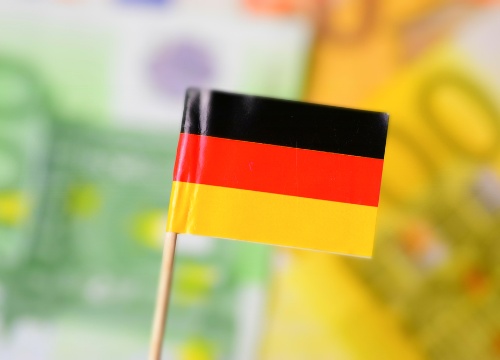
The Federal Statistical Office of Germany will publish the inflation data on Friday at 12:00 GMT.
Headline CPI is set to rise 2.1% YoY in August, a tad higher than the prior increase of 2%.
German inflation data is often seen as a precursor to the Eurozone figures, impacting the ECB’s easing outlook.
The Federal Statistical Office of Germany (Destatis) will publish the country’s preliminary estimate of the Harmonized Index of Consumer Prices (HICP) inflation data for August on Friday at 12:00 GMT.
German inflation data usually provides clues to Eurozone figures and also helps markets gauge the European Central Bank’s (ECB) path forward on interest rates. The central bank’s inflation target is 2.0%.
The EUR/USD pair is expected to experience volatility in the case of any surprises in the German inflation report.
What to expect in the next German inflation report?
The headline annual German Consumer Price Index (CPI) is expected to rise 2.1% in August, up from a 2% increase reported in July. The monthly CPI inflation is set to show no growth, cooling off from a 0.3% increase in the previous period.
Meanwhile, the HICP inflation is expected to tick up to 2% year-over-year (YoY) in August from 1.8% in July. Monthly, the core HICP is seen stagnating in August, compared with a 0.4% acceleration in the previous month.
Previewing the August inflation data, analysts at TD Securities (TDS) explain: “July's print surprised to the downside due to a rounding effect at 1.845%. We expect Aug to start climbing back to target as energy deflation moderates due to base effects and increases in gas and electricity prices.”
“Services should also reverse the July weakness. This should alleviate concerns of a persistent inflation undershoot in the euro area's largest economy,” analysts at TDS noted.
Additionally, the regional inflation data points provide hints on the nationwide headline German reading for August.
North Rhine-Westphalia (NRW) is the first German state to report August inflation readings and, as it is the most populous state, the readings can often be a signal of the trend in the figure for the whole of Germany. However, these figures don’t always work well as a forward-looking indicator.
Meanwhile, Spain is also due to publish its national inflation figures for August on Friday, which will further help offer clues about the direction of the German, as well as the whole Eurozone HICP data.
How could the German HICP inflation affect EUR/USD?
At the press conference following the July policy meeting, ECB President Christine Lagarde said, "risks to economic growth remain tilted to the downside” and “the outlook for euro area inflation is more uncertain than usual."
Last week at Jackson Hole Symposium, Lagarde noted that “Europe’s labor market has performed far better than expected, despite soaring inflation and steep interest-rate hikes in recent years,” per Reuters.
In light of the uncertain euro area growth and inflation outlook and a widely anticipated ECB interest rate cut pause next month, the upcoming HICP inflation data from Germany (on Friday) and the Eurozone (next Tuesday) will be key in determining whether the central bank will resume easing after the September meeting.
A hotter-than-expected headline and core HICP inflation data could reinforce expectations for an extended pause by the ECB beyond September. In such a case, EUR/USD could find fresh demand, initiating an advance toward the 1.1700 level.
However, if inflation in the Eurozone’s economic powerhouse unexpectedly slows down, it would reinforce the ECB’s easing expectations. Subsequently, the main currency pair could resume the downside toward the 1.1500 region.
Dhwani Mehta, Asian Session Lead Analyst at FXStreet, offers a brief technical outlook for the major and explains:
“EUR/USD has managed to defend the 21-day Simple Moving Average (SMA) support on Thursday, keeping the bullish momentum alive despite the latest downtick. The 14-day Relative Strength Index (RSI) holds above the midline, currently near 51, justifying the positive outlook in the near term.”
Dhwani also outlines a few important technical levels to trade the EUR/USD pair: “If the ongoing retreat picks up pace, the August 27 low of 1.1574 could align as the immediate support. A sustained move below the level will expose the August 5 low at 1.1528, followed by the 100-day SMA at 1.1505. Conversely, buyers need to clear the 1.1700 resistance area to challenge the three-week highs near 1.1750. The July 24 high of 1.1789 will be the last line of defense for sellers.”
* The content presented above, whether from a third party or not, is considered as general advice only. This article should not be construed as containing investment advice, investment recommendations, an offer of or solicitation for any transactions in financial instruments.


